In the fast-paced world of food delivery and takeaway, burger packaging is more than just a container. It plays a crucial role in maintaining freshness, protecting structure, and leaving a positive brand impression. With sustainability regulations tightening and customer expectations rising, food businesses need to be smarter about how they package their signature menu item.
This guide breaks down the key considerations when selecting burger packaging for delivery and takeout, and how brands can strike a balance between practicality, cost, and environmental responsibility.
Why Your Burger Box Matters
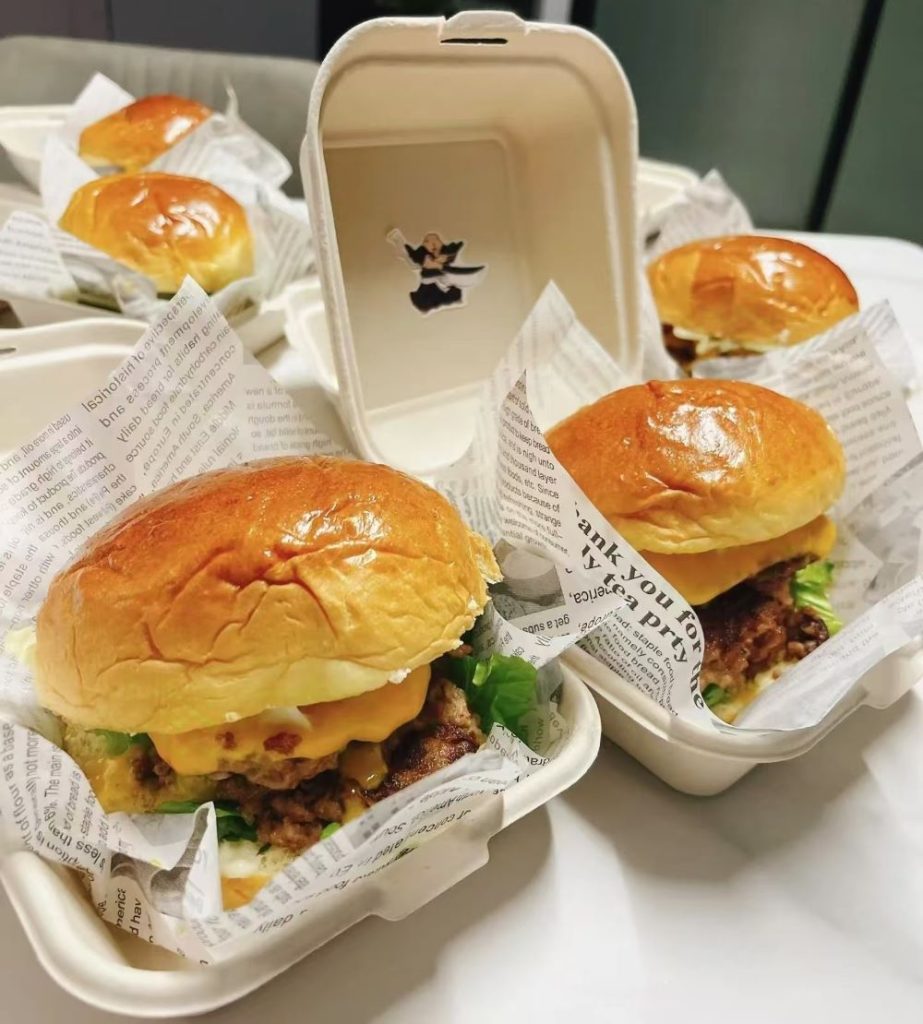
Burger packaging is not just a way to carry food. It affects how consumers perceive your brand and what they believe before taking that initial bite. For the customer, when they open that delivery bag, the box is literally the first thing they touch and see. Its appearance, texture, and durability all contribute to creating an inviting dining atmosphere.
In many cities in North America and Europe, delivery is exploding. The appropriate burger box will maintain a burger’s warmth and freshness, increasing customer satisfaction and return business! With inadequate packaging, cold burgers, soggy buns, or burger blowout can result, leading to negative customer experiences and abandoned carts.
Picking Perfect Burger Packaging
Finding the right burger packaging for delivery and takeout takes more than grabbing the first stack of boxes you see. Every decision made when selecting packaging affects how your food will travel to, arrive at, and ultimately be enjoyed at home or in the office.
The best strategy first starts with an understanding of your menu and who your customers are. Then, work with your suppliers to find out what works in practice—not just theory. Each aspect, including the size of the box and the type of material, contributes to how well burgers can be delivered hot, fresh, and delicious.
1. Material Matters: Paper, Plastic, Foam, or Bagasse?

The material you choose directly impacts the eating experience, environmental footprint, and how your brand is perceived.
- Foam (EPS): Once popular for insulation, foam is now banned or restricted in many regions due to environmental concerns. It’s not biodegradable and can’t be recycled easily.
- Plastic: Lightweight and moisture-resistant, but increasingly associated with pollution. Plastic clamshells are falling out of favor among eco-conscious consumers and regulators alike.
- Paperboard: Recyclable and printable, but often lacks the durability needed for greasy or hot food unless coated—which can affect compostability.
- Bagasse (sugarcane pulp): A byproduct of sugar production, bagasse is both compostable and heat-resistant. It holds up well against moisture and grease, making it ideal for hot, juicy burgers. It’s the material of choice for many sustainable packaging suppliers, including InNature Pack.
Choosing a material isn’t just about function; it’s also a statement about your brand’s values. More customers are looking for signs that your business takes sustainability seriously.
2. Size and Structure Design
Just as every burger is different, so are their requirements. A classic cheeseburger, a loaded double-stack, and a vegan beetroot patty all require different box sizes—and handling—needs. Choose 4×4″ for small sliders, 6×6″ for single burgers and 9×6″ or 9.5×4.5″ for double stacks or combo meals. A box that’s too small will pinch the burger and mangle the bun and toppings. Conversely, one that’s too large has a ton of space for food to slide around.
Consider whether you want separate compartments for fries or sauces. They can be designed with a center divider for toppings, ensuring everything stays just how it should!
2. Master Temperature Control
Nobody likes a lukewarm, soggy burger. It goes a long way to use materials that retain heat while allowing steam to escape. Cardboard and bagasse clamshell can keep the heat in without melting or warping. Many of these are even made to accommodate food temperatures up to 220 °F! That’s what makes them great for burgers that go directly from grill to box.
To further improve heat retention, many restaurants utilize foil-lined paper wraps or cardboard sleeves. These improve heat retention and prevent moisture buildup that makes buns soggy.
3. Demand Structural Strength
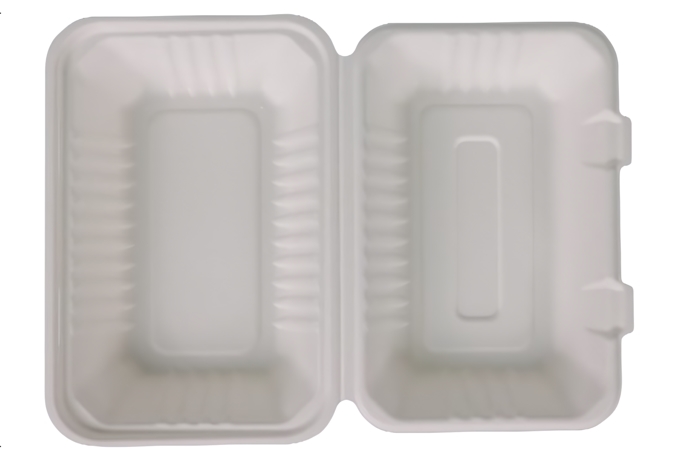
When stacking orders for delivery, weaker packaging gets crushed, resulting in squashed buns and leaking sauces. Sturdiness is key. Thick, rigid boxes—especially those with the structural integrity of corrugated cardboard and high quality bagasse—hold up under stacking and transport pressures.
Buger boxes with corner supports or additional ribbing are able to hold heavier weights without flexing. Identifying weak points by testing boxes—whether that means stacking food-filled boxes or testing through a bumpy delivery ride simulation—is key.
Strong packaging not only protects the food but keeps the kitchen and delivery staff confident that the order will arrive in one piece.
4. Win Against Leaks & Mess
Greaseproof options, like polys coated cardboard or bagasse, prevent oils and sauces from leaking through and creating a greasy stain. Don’t forget closures! Creating a solid clamshell or box with tight closure mechanisms ensures the product stays contained even with a high piled burger or sauce heavy creations.
Prior to selecting a package, put it to the test with a variety of burgers—from drier to super saucy. Introduce some practical, everyday pressure, such as an angle tilt or light jostle, and test the packaging under those conditions. Educating kitchen staff on proper burger packing techniques helps reduce leakage, too.
The right packaging will ensure the meal arrives in good condition, resulting in happy customers and less complaint and refund activity.
5. Weigh Eco-Friendly Options
Sustainability is the hottest topic around for businesses and consumers. Biodegradable and compostable materials—such as bagasse, cardboard, and kraft paper—are increasing in popularity, particularly with younger, urban consumers.
Bagasse burger boxes are a stand-out: 100% biodegradable, compostable, and easily recyclable. They are great for hot, greasy burgers, holding heat up to 220°F. Many brands will do a side by side of biodegradable versus recyclable to determine which best aligns with their brand values and their local waste infrastructure.
In fact, most customers—roughly three-fourths of them in surveys—like sustainable packaging. Promoting your eco-friendly options is a great way to draw in customers for a second visit. Understand what local law and recycling program options exist. Inquire with your suppliers about their sustainable manufacturing processes to make sure you’re making the right choices for your customers’ demands.
6. Cost vs. Value: Is It Worth Paying More for Quality Packaging?
A lot of businesses are cost-sensitive when it comes to packaging—and that’s understandable. But focusing solely on unit price can be short-sighted.
Here’s why quality packaging pays off:
- Fewer Complaints: Sturdy, grease-resistant boxes reduce delivery issues and refund requests.
- Better Brand Perception: Eco-conscious consumers are willing to pay more when they see sustainable, high-quality packaging.
- Operational Efficiency: Well-designed packaging reduces prep time and storage hassle.
And when you factor in potential discounts on bulk orders or promotions (like those we offer at InNature Pack), the difference in cost becomes marginal compared to the long-term value.
7. Know Food Safety Rules
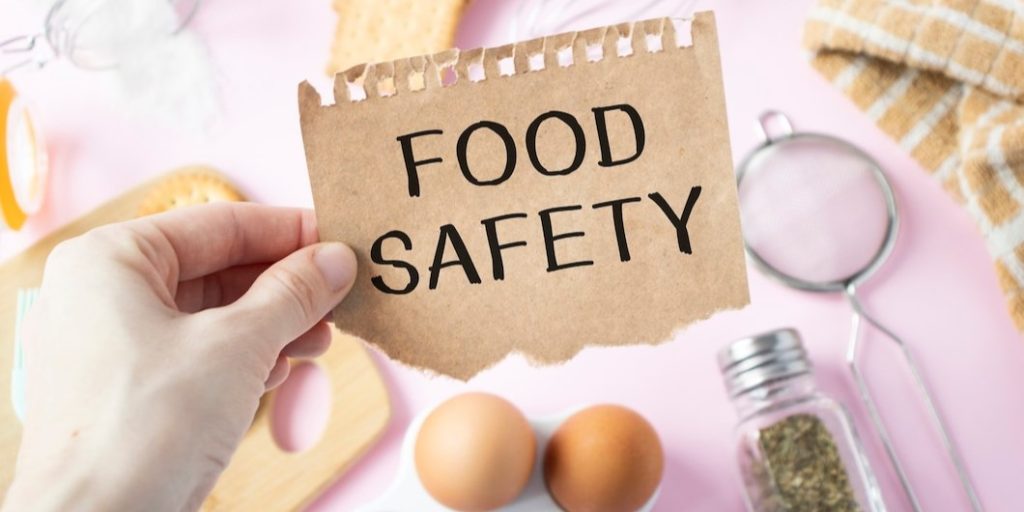
Food safety should always be a top priority. Food safety is an important consideration. All packaging should be food-safe, any materials used should not leach harmful chemicals into food or break down when exposed to hot food.
Having staff appropriately trained on safe packing is a must. Washing hands, using gloves, and ensuring boxes are sealed appropriately help keep food safe as it heads out the door.
Following food safety regulations protects you from costly fines and fosters trust with your customers, who rely on you for safe, high-quality meals. Implementing a solid packaging strategy enhances your brand’s reputation in the foodservice industry.
8. Custom Branding: A Small Box, Big Impact
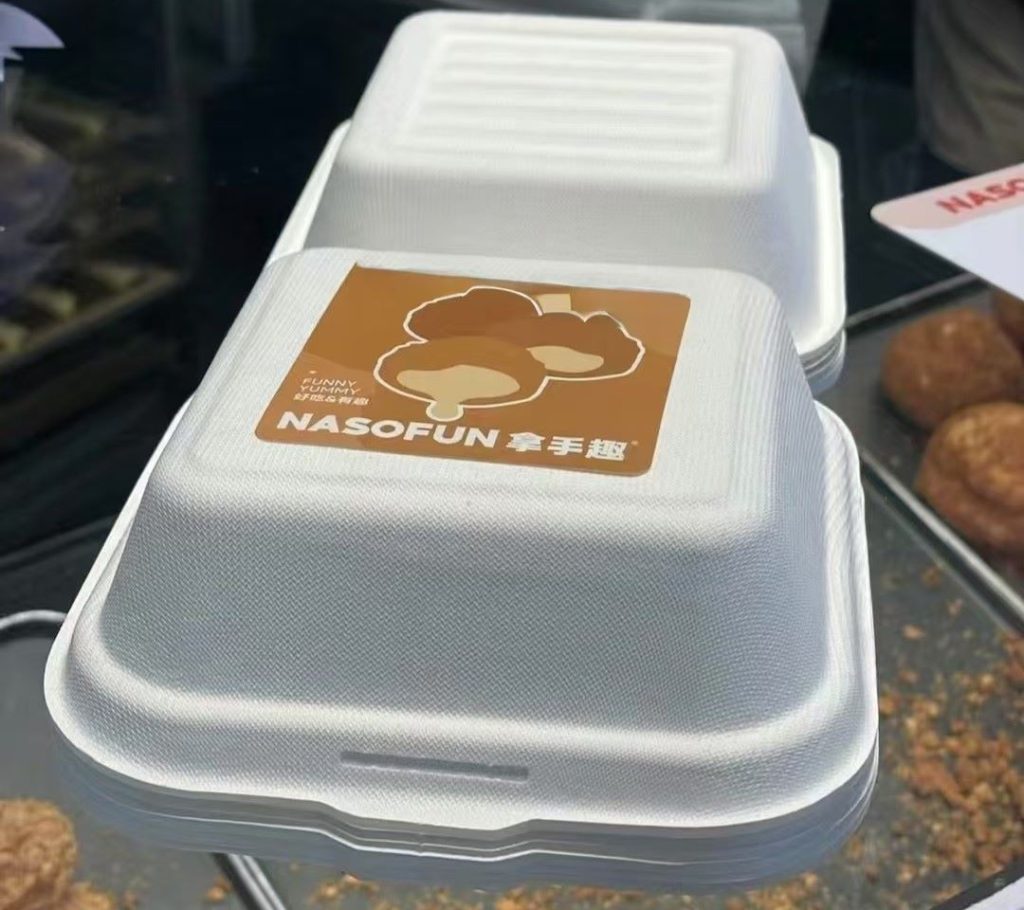
Your burger box can do more than carry food—it can carry your brand.
Custom-printed packaging reinforces brand recognition and enhances the unboxing experience. Especially for delivery-only restaurants or virtual kitchens, your packaging may be the only physical touchpoint with the customer.
Options include:
- Logo printing
- QR codes for reorders or reviews
- Eco-labels that highlight your compostable materials
InNature Pack offers low-MOQ printing options and supports both full-color and single-color branding. Our customers find that even a minimal design with a logo and eco message can create a strong impression.
Burger Packaging: Popular Options
Selecting burger packaging for delivery and takeout involves considering shapes, materials, and what best suits your food. The right choice depends on your menu, how hot or crisp you want your burgers, and what your customers prefer. Shops are constantly experimenting with new packaging to get a leg up, cut expenses, and adapt to emerging trends with take-out and delivery.
Receiving feedback from your customers on what they’d like to see and what works best for them can inform a smarter packaging decision.
Classic Clamshell Containers
Classic burger clamshells, traditionally made from molded fiber or bioplastics such as PLA, are well-recognized for protecting burgers in transit. PLA-lined clamshells provide extra moisture resistance, preventing buns from becoming soggy, and can be composted in industrial facilities.
Cost-effective Option Cardboard clamshells are less expensive than many other options. Durable and stackable, they hold burgers 5 °F of their original temperature for 20 minutes, so they’re a great option for quick delivery trips. They can be printed with your logo or brand, providing a highly custom look.
As more shops choose to stop using polystyrene clamshells because of the dangers of styrene, they are making greener choices.
Versatile Burger Boxes
Burger boxes made from bagasse or kraft paper fit any size burger with all the fixin’s. They’re ideally suited for everything from a single to a fully loaded double cheeseburger! These boxes maximize efficiency in your operation—they stack neatly, are fast to assemble, and work with a variety of menu items as well. Experimenting with various box styles ensures you determine what works best for your operation and diners.
Essential Wraps and Liners
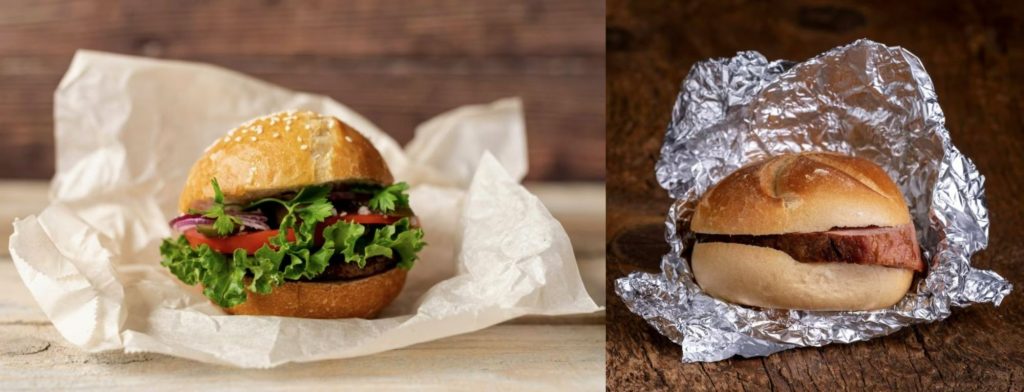
Essential Wraps and Liners To-go wraps and box liners both enhance burger presentation and help minimize leaks. Paper wraps are inexpensive—as little as $0.02 per wrap! On the other hand, they don’t maintain heat as effectively. Burgers can lose as much as 10 °F within 15 minutes. Foil-lined wraps or sleeves are excellent heat retainers and grease protectors, so they’re a great choice for those plump, juicy burgers.
Branded wraps not only complement your aesthetic, but help incoming orders pop. Better wraps are more convenient for diners to open and dispose of.
Level Up Your Takeout Game
Choosing the perfect burger packaging is not just a decision—it sets the tone of the delivery experience. Then it’s food type, then distance, then date. For messy burgers, moisture-proof wrappers are ideal. For double-decker burgers, clamshell boxes provide a solid backbone and prevent disaster.
Consider boxes that have a secure closing mechanism, don’t leak, and are lightweight. Familiar packaging is key. Big brands spend their time and money designing bags and boxes with big logos or loud colors. This makes it easier for people to see the food from a distance, creating a memorable impression.
Insert handwritten messages or logo stickers to personalize orders with that homey feel. Green alternatives, such as compostable wraps, are becoming increasingly important. When smart design gets customers to take photos and share on social media, it’s your name going viral.
- Pick the right shape and size for each burger.
- If you have a saucy or fully-loaded burger, invest in a leak-proof, sturdy wrap.
- Supplement your branding—print your logo on takeout bags or boxes for free advertising every time someone picks up an order.
- Go for compostable or recyclable materials.
- Slip in a thank-you note or sticker.
- Use handles for easy carry.
Test, Tweak, Triumph
Finding the right burger packaging for delivery and takeout isn’t a set-it-and-forget-it endeavor. Successful businesses tend to begin from a more trial-and-error approach. They test vented paper wraps, sturdy clamshells, and compostable fiber boxes to determine what works best to maintain burger quality and avoid bun sogginess.
They scour customer feedback, with customers usually providing truthful reviews when it comes to leakage or heat escaping. Many stores will implement surveys or monitor frequent reorders to identify good choices. As periods progress, they pay attention to goings-on and adjust their selections, perhaps including liners or converting to packaging with superior insulation.
Sometimes, a small addition—a crisp table with all important details—can do wonders. Monitor which orders remained warm and which customers enjoyed the packaging to identify what’s working well and what could be improved. Here is a sample form:
| Date | Package Type | Orders | Customer Rating | Delivery Success |
|---|---|---|---|---|
| 2024-06-01 | Paper Wrap | 120 | 4.3/5 | 94% |
| 2024-06-08 | Fiber Box | 130 | 4.7/5 | 98% |
| 2024-06-15 | Clamshell Plastic | 110 | 4.1/5 | 92% |
Conclusion
Burger packaging is a small detail that makes a big difference—especially in delivery and takeout. Choosing the right material, structure, and supplier can protect your product, promote your brand, and align with your values.
If you’re exploring sustainable burger box options, InNature Pack is here to help. Reply YES or contact us today to get a free sample or a quote within 1 working day.

